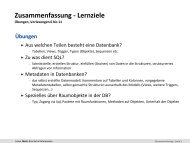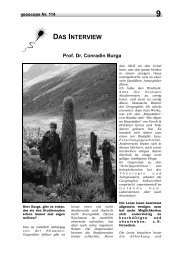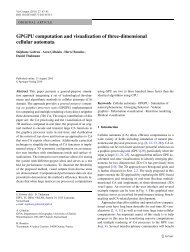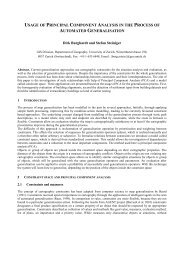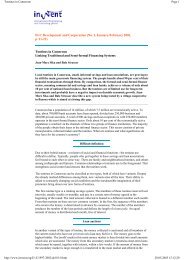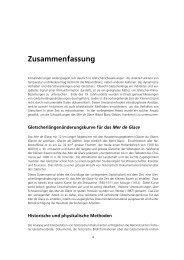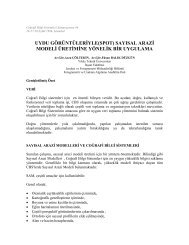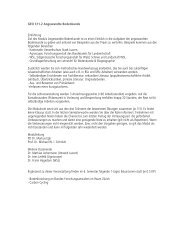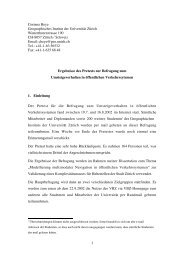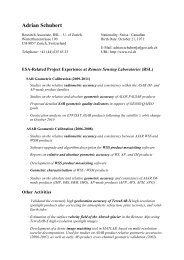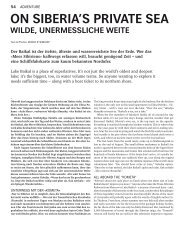KYRGYZSTAN TODAY Policy briefs on - Department of Geography
KYRGYZSTAN TODAY Policy briefs on - Department of Geography
KYRGYZSTAN TODAY Policy briefs on - Department of Geography
You also want an ePaper? Increase the reach of your titles
YUMPU automatically turns print PDFs into web optimized ePapers that Google loves.
PART II. INTERNAL AND EXTERNAL MIGRATION<br />
IN <str<strong>on</strong>g>KYRGYZSTAN</str<strong>on</strong>g><br />
Anar Musabaeva,<br />
Independent expert<br />
The <str<strong>on</strong>g>Policy</str<strong>on</strong>g> <strong>of</strong> Exporting the Labor Force:<br />
Challenges for Kyrgyzstan<br />
During the past decade, Kyrgyzstan has come to supply significant manpower to<br />
the labor markets <strong>of</strong> Russia, Kazakhstan and other CIS countries. Acknowledging the<br />
weakness and vulnerability <strong>of</strong> the nati<strong>on</strong>al ec<strong>on</strong>omy, the Kyrgyz government has rested<br />
its hopes <strong>on</strong> labor migrati<strong>on</strong>, believing this will reduce tensi<strong>on</strong> in the domestic labor<br />
market while returning stable cash remittances to the Republic. The nati<strong>on</strong> is currently<br />
taking measures to protect the rights <strong>of</strong> migrant workers in the countries <strong>of</strong> their work,<br />
al<strong>on</strong>g with steps to regulate and legalize emigrati<strong>on</strong>. At the same time, there is an<br />
increasing focus by the government <strong>on</strong> regulating the export <strong>of</strong> manpower to ensure<br />
migrant workers have the skills to be competitive in the most in-demand pr<strong>of</strong>essi<strong>on</strong>s<br />
<strong>of</strong> recipient countries. This article examines the factors that determine the prospects <strong>of</strong><br />
improving policies related to the export <strong>of</strong> skilled manpower.<br />
Previous studies identified the many challenges <strong>of</strong> achieving efficient implementati<strong>on</strong><br />
<strong>of</strong> policies <strong>of</strong> labor migrati<strong>on</strong>. The main challenges are a) problems <strong>of</strong> marketing the<br />
labor force and studying trends <strong>of</strong> development in domestic and foreign labor markets,<br />
and b) the problem <strong>of</strong> the high cost and complexity <strong>of</strong> reorienting the vocati<strong>on</strong>aleducati<strong>on</strong><br />
system to reflect market c<strong>on</strong>diti<strong>on</strong>s. C<strong>on</strong>currently, labor migrati<strong>on</strong> removes<br />
from Kyrgyzstan many workers <strong>of</strong> high-demand trades; the domestic labor market is<br />
characterized by this kind <strong>of</strong> increasing distorti<strong>on</strong>.<br />
Clearly, in the present circumstances the most appropriate measures to increase<br />
the benefits <strong>of</strong> labor migrati<strong>on</strong> include a preliminary explanati<strong>on</strong> to potential migrants<br />
<strong>of</strong> the problems <strong>of</strong> work activities, and improving their knowledge <strong>of</strong> the Russian<br />
language. To develop the domestic labor market, and to implement more effective<br />
marketing <strong>of</strong> manpower for export, the nati<strong>on</strong> must create and systematically use<br />
analytical tools to research labor markets in Kyrgyzstan and the CIS. The reform <strong>of</strong><br />
100





